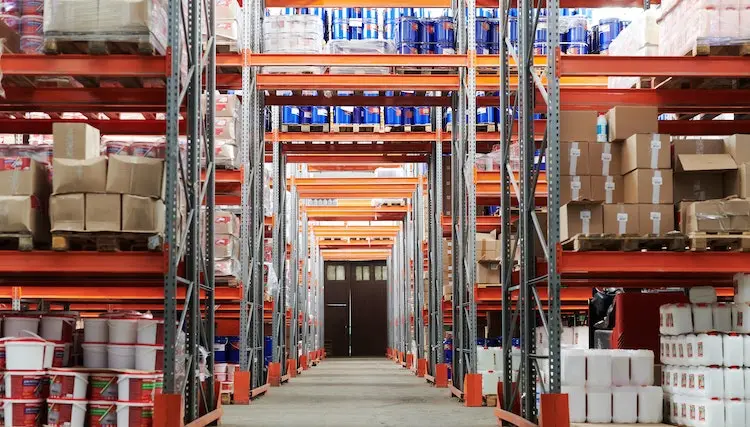How to Ensure Quality of Data Labeling for Machine Learning
Labeled data is the cornerstone of any machine learning project that is underway. But if you are new to machine learning and AI in general, let us explain to you the value of data in more detail.
If you have raw and unprocessed data, you can hardly ever build a robust machine-learning model with it. The main reason is that the end outcomes will be inaccurate and unreliable, so it makes no sense to spend time on such a project. This is when data labeling, aka data annotation, kicks in and does its magic.
Yet, achieving high-performing data for your AI project is a tough challenge. Plus, there are a plethora of data annotation service providers and tools that automate this process. So, you need to know the basics of data labeling and the quality criteria to choose the most trusted partner or the best tool for your project. Another issue that matters here is timing: you don’t want to waste a lot of time on labeling data, re-labeling it in case the quality is poor, or looking for the most expert service provider.
With that said, let’s learn about accurate data labeling and see why it’s such a pressing issue in the modern data-driven environment.
Labeled Data for Machine Learning: Why Does It Matter?
Nearly 70% of industry executives think automation and machine learning will free up their staff to concentrate more on strategic tasks. This implies that ML solutions will only advance, necessitating a careful examination of data annotation.
Let’s have a look at the self-driving car. Since it doesn’t rely on a human driver, there has to be something that tells the driverless system what to do and how to do it. That something is labeled training data that is fed into a driverless algorithm so that it can learn from it (from real-life scenarios and examples) and serve humans in the most secure and reliable way.
A little caveat, though: the data must be of excellent quality.
Supervised machine learning algorithms need labeled data in order to learn from it. More specifically, they learn to recognize patterns in data, extract meaningful information from input data, and provide us with accurate analytics. For this reason, data annotation is considered the most crucial part of the ML model development process.
However, data labeling often lacks due attention from companies or individual clients working on AI initiatives. And the risks are huge. They put at risk the labels’ quality and the entire project’s development outcomes at risk. It seems like a waste of time.
Labeled data means prepared data for machine learning. As a rule, this is a manual process, when teams of human annotators put the labels manually on each piece of data, including images, video frames, audio files, and even text data.
Simply put, they turn a raw dataset into a meaningful one, so that you can train your model on it and get accurate results. After that, you can tune and test your model to achieve the initial goals of the project. The process is rather tedious, so it requires a professional approach to it.
What Is Quality in Data Annotation?
The quality of training data for machine learning systems is fundamental to ensure their high performance. It is generally measured from three different perspectives. They are accuracy, consistency, and completeness of labels (aka tags).
Benchmarks (also known as the gold standard), consensus, and review are the accepted procedures in the industry for determining the quality of training data. Finding the ideal combination of such multi-layered quality assurance (QA) practices is, thus, crucial for your successful project development.
How to Measure the Quality of Labels?
Only by achieving high quality and accuracy of annotated data can your machine learning model perform well and deliver outstanding predictions. It’s believed that to ensure the quality of labeled data, it must be thoroughly examined and revised by humans. However, this process also involves technology to alleviate human work. It can be algorithmic and heuristic validation of the labels’ correctness and quality.
There is also an entire procedure that most data annotation companies include in their work, such as QA, short for quality assurance. What does this mean? So, once the dataset has been annotated, you want to make sure that the labels are informative and correct, and you can use such data to create top-notch ML models. In this case, self-check, cross-check, or manager’s review can be applied.
QA in machine learning, essentially, is performed by the team of annotators to check the accuracy of these labels by performing the following steps:
- Consensus algorithm
In order to prove data dependability, this stage entails obtaining a number of systems or individuals to agree on a single data point. Either a fully automated approach or assigning a specific number of reviewers to each data point can lead to consensus.
- Cronbach’s alpha
Using a scale, this method determines how interrelated or reliable something is. It’s not necessarily the case that a measure with a high alpha number is one-dimensional. You can do further research if you want to prove that the scale is unidimensional in addition to assessing internal consistency.
- Benchmarks
Benchmarks are used to assess how closely annotations comply with a confirmed standard established by data specialists. They take the least amount of overlapping work and are also referred to as gold sets. As a result, benchmarks are the most affordable QA choice. Benchmarks might be quite helpful as you continue to assess the quality of your work throughout the project. They can also be used to select annotation candidates as test datasets.
Other than that, annotators can review their labels by performing a self-check. Additionally, a cross-reference QA procedure can be implemented by companies providing data labeling services to ensure there is no bias in annotated data. Last but not least, a data labeling project manager can revise the performed annotations in accordance with the best quality standards.
Summing up, to ensure the quality of your labeled dataset is appropriate, you first need to clarify quality standards with the team of annotators. It’s essential to have an expert team on board with annotators who label with precision, have adequate tech skills, and follow the desired output. Then, a multi-layered QA procedure can be (and is highly recommended) applied.
Final Considerations

The rising adoption of artificial intelligence urges us to develop even more technologies and systems that can make our lives much easier. However, the more data is produced to train such sophisticated systems, the harder it is to ensure the labeled data is of the highest quality.
Data labeling proves to be the most viable strategy for getting the most accurate training data for your ML model. However, annotated data doesn’t always mean quality data, which is why a number of QA procedures exist to help data scientists verify the accuracy of labeled datasets.
In this article, we’ve discussed the key strategies to ensure the quality of annotated data for machine learning. These steps shouldn’t be dismissed as they help verify how good data annotators performed their job, eliminate errors and bias, and ultimately provide you with the best-performing data for your state-of-the-art ML project.







